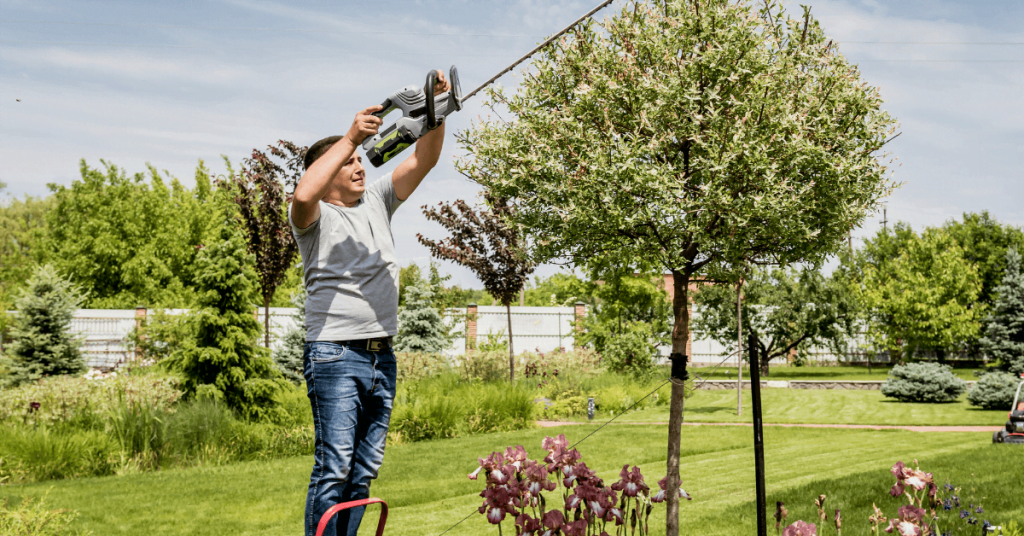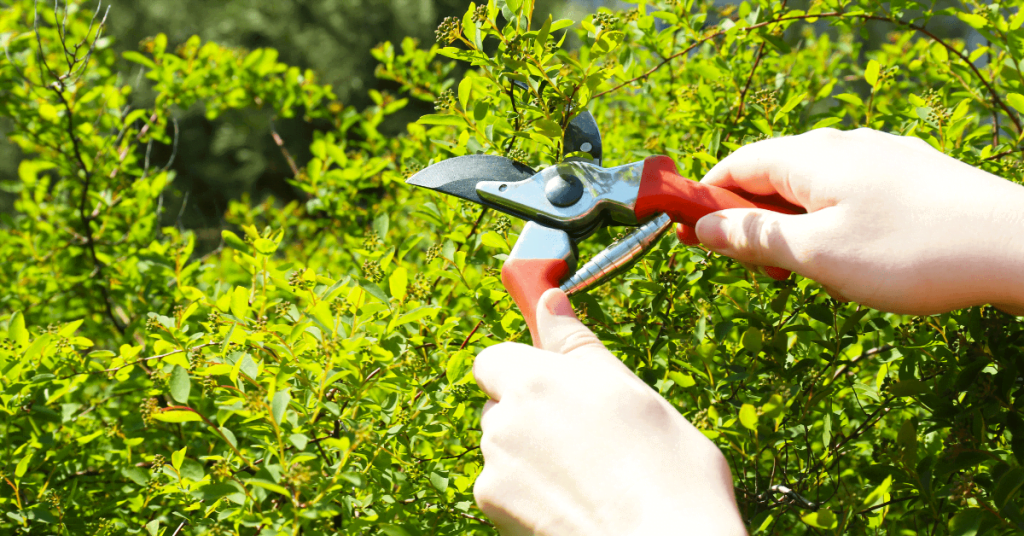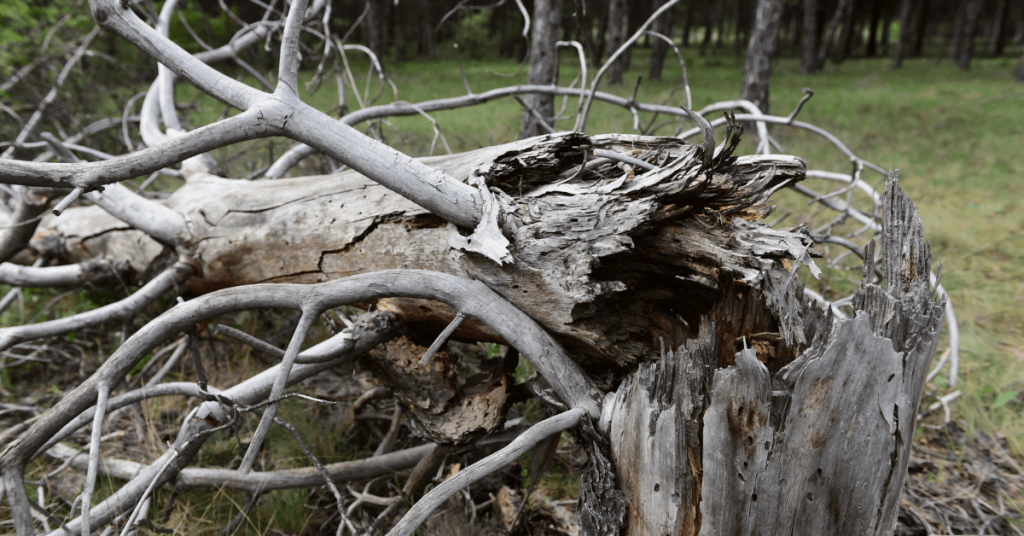When it comes to trimming trees properly, many homeowners are intimidated by the thought of taking on such a daunting task – but rest assured, you can save yourself time and money by learning how to do it yourself.
With the right tools, knowledge and patience you can learn how to safely and effectively trim trees in your yard without having to rely on an outside contractor.
In this blog post, we’ll discuss everything from what type of saws works best for certain tree structures to when is the optimal time for pruning your greenery. By educating yourself with our tips and tricks you’ll be able to trim your trees successfully.
How To Trimming Trees in Bristol?
List Of Necessary Tools
- Pruners: Pruning shears are one of the most essential tools for pruning trees. They come in a variety of shapes and sizes and can be used to trim branches up to two inches thick.
- Chainsaw: A chainsaw is best reserved for larger branches that cannot be trimmed with pruners. Be sure to use the proper safety gear and follow all manufacturer instructions when operating a chainsaw.
- Pole Pruners: Pole pruners are ideal for reaching branches that are too high to trim with regular pruners. They come in several different lengths and can be used to safely reach branches up to fifteen feet high.
- Ladder: A ladder is an essential tool when pruning tall trees. It allows you to safely reach high branches without having to climb the tree itself. Be sure to use a sturdy ladder and follow all safety guidelines.
How to recognize when a tree needs trimming?
When it comes to trimming a tree, recognizing when the tree needs to be trimmed is a critical part of the process.
Some signs that your tree may need trimming include:
- Dead or diseased branches: If you notice any dead, broken, or diseased branches on your tree, they should be removed as soon as possible to prevent the spread of disease and insect infestations throughout the tree.
- Overgrown branches: If some of your tree’s branches are growing too close to power lines or buildings, they should be trimmed back to prevent damage.
- Crowded branches: Overcrowded Trees, with too many branches in a small area, should be pruned so the tree can grow in a healthy and balanced manner.
- Excessive leaf growth: If you notice more leaves than usual on your tree, it may be a sign that its branches are being weighed down and need to be trimmed.
- Uneven growth: If some parts of your tree are growing more quickly than others, it can cause an uneven shape and should be pruned back to even out the growth.
No matter what kind of tree you have, regular trimming is important for its health and longevity. Paying attention to these signs can help you identify when your tree needs trimming so that it stays healthy and vibrant for years to come!
How to make proper cuts to prevent damage to the tree?
When trimming a tree, it’s important to make proper cuts to prevent damage. Begin by cutting away any dead, diseased, or damaged branches first. This will help the tree conserve its energy for healthy growth.
Make sure that all cuts are angled slightly away from the trunk of the tree and never remove more than one-third of the tree’s foliage. When removing a branch, be sure to make a clean cut right above a bud or node so that new growth can emerge. If you make any large cuts, it’s important to seal them with a wound dressing to prevent any diseases from entering the tree.
Finally, always remember that less is more when it comes to trimming a tree. If you prune too much, you can damage the tree and stunt its growth. Be careful to only remove what’s necessary for the health of your tree!
How to remove large branches safely?
When removing large branches from a tree, it’s important to use the proper technique to prevent damage.
- First, make sure you are using the right tools for the job such as pruning shears and loppers.
- Next, carefully assess where you will be cutting and make sure that you won’t be damaging any other branches or the trunk of the tree.
- When you are ready to make the cut, use a saw and slowly work your way through the branch. Make sure that you don’t try to rush and always keep both hands on the saw for better control.
- Finally, carefully remove all sawdust from around the wound and seal it with a wound dressing to prevent any diseases from entering the tree.
By following these steps, you can ensure that your tree remains healthy while removing large branches safely and effectively.
Tips on how to properly care for the tree after trimming?
- Water the tree: After trimming, it is important to water the tree well as this will help it heal and remain healthy. Make sure to give it enough water to keep its soil moist, but not soggy.
- Prune regularly: Regular pruning helps maintain a balanced canopy of branches and encourages the tree to grow healthily. It also helps keep the tree free of dead and diseased branches.
- Monitor for pests: Trimming can leave wounds that are susceptible to pest infestations, so inspect your tree regularly for signs of unwanted visitors such as aphids or scale insects. If you spot any pests, take steps to remove them immediately.
- Fertilize appropriately: Regular fertilizing helps the tree to heal from pruning wounds and stay healthy over time. Choose a fertilizer that is appropriate for the type of tree you are caring for and apply it according to the manufacturer’s instructions.
- Plant your tree in ideal conditions: Before trimming your tree, make sure it is planted in an ideal spot with enough space to grow and plenty of sunlight. This will help the tree thrive even after you’ve trimmed it.
- Mulch around the base of the tree: Applying a thick layer of mulch around the base of the tree helps retain moisture, keep weeds down and protect its roots. Make sure to leave a few inches between the trunk of the tree and the mulch.
- Remove stumps: If you’ve removed large branches, it’s important to also remove the stumps so that they don’t attract pests or cause rot in your tree. To do this, you can use a stump grinder or even dig them out manually.
- Inspect after storms: After strong winds or storms, inspect your tree for any broken branches or signs of damage and trim them back if necessary. This will help to ensure that your tree remains healthy over time.
That’s it! Following these simple tips will help you properly care for your tree after trimming and ensure that it remains healthy. If you have any questions or concerns, be sure to consult with a professional arborist.
How to dispose of trimmed branches and debris?
It is important to properly dispose of trimmed branches and debris from pruning activities. Some strategies for disposal include recycling, composting, mulching, burning, or taking the material to a local waste transfer station.
1) Local municipality
If you choose to recycle the branches and debris, check with your local municipality or tree service company about available options. Many municipalities have curbside collection services for green waste, so you can easily place your branches and debris in a designated container or bag. The collected material is then taken to a composting facility, where it will be processed into mulch or soil amendment.
2) Mulching
If composting the material is not an option, consider mulching it on-site. Mulched material can be used as a ground cover or to fill in low spots in your landscape. It will also help prevent the growth of weeds and retain moisture in the soil.
3) Burning
Burning is another option, but it should only be done if local ordinances allow it. Before burning any material, check with your local fire department first to ensure safety.
4) Transfer station
If burning and mulching are not options, you can take your branches and debris to a local waste transfer station. The material will then be transported to a landfill or recycling facility, depending on the type of material being disposed of.
By properly disposing of trimmed branches and debris, you’ll help keep the environment safe and clean. Plus, you can also save money by avoiding costly disposal fees. So make sure to follow the appropriate guidelines when disposing of pruning materials.
Doing so will help ensure that your efforts are beneficial to the environment and our community as a whole.
Wrap Up
Trees are a great asset to have on your property. They can provide shade and privacy and even help increase your home’s value. But like everything else in life, they need upkeep. Trimming trees is an important part of tree care but it can be expensive if you hire someone to do it for you.
Luckily, with a little know-how and the right tools, trimming trees yourself isn’t as difficult or dangerous as you might think. So next time your trees need a trim, save yourself some money and give it a try!



